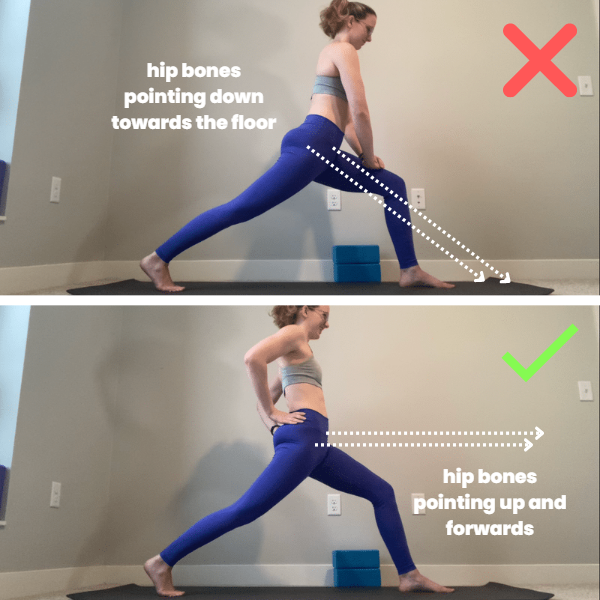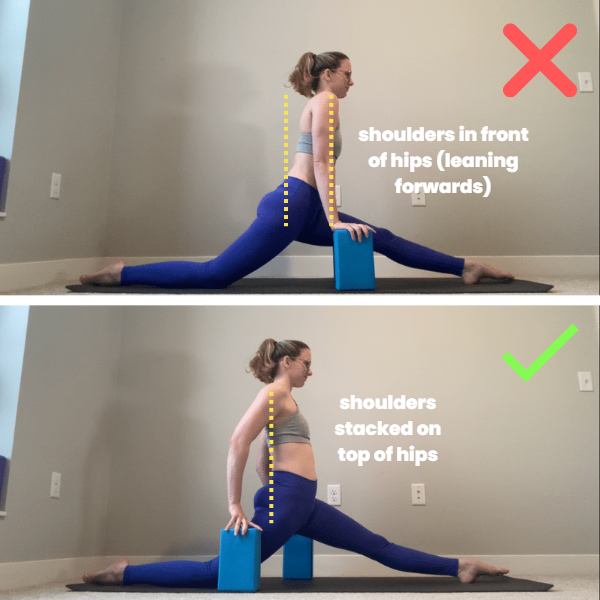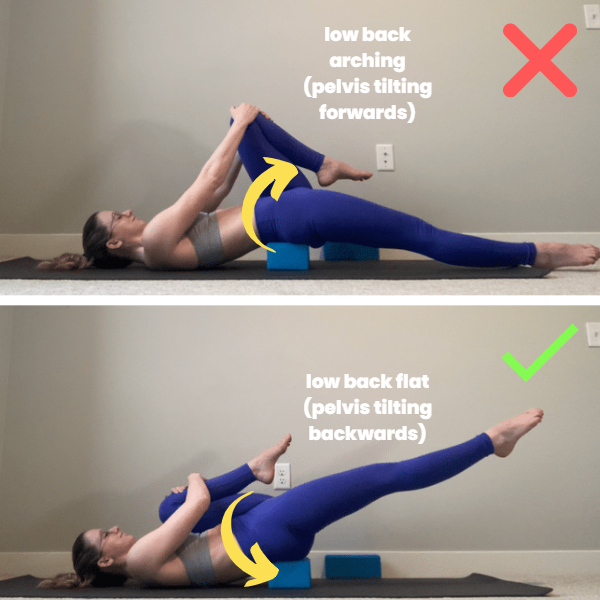Proper Pelvic Position for Hip Flexor Stretches
Proper Pelvic Position for Hip Flexor Stretches
(aka How Not to “Cheat” the Stretch)
Our bodies are magnificently efficient machines capable of doing so many feats of derring-do. But being efficiency maximizers, that often means our bodies like to walk the path of least resistance, trying to find the easiest, most comfortable posture to hold - which isn’t always helpful when trying to stretch!
Our hip flexors, the muscles that cross the front of our hip joint, are notorious for trying to avoid a stretch. Most people - at least folks who sit for large portions of the day - have relatively tight hip flexors from spending all day with those muscles in a shortened position. So when we try to stretch them out, which can feel quite challenging, our hips wiggle to a position of less resistance that feels more comfortable (but is a less effective stretch).
How can you make sure you’re getting a proper stretch in your hip flexors in drills like lunges, and front splits? Make sure you’re avoiding these two common faux pas:
Hip Flexor Stretch “Cheat” #1:
Tilting/Rotating the Pelvis Forwards
What this looks like:
In a kneeling lunge…
In a standing lunge…
In a front split…
In a back-lying stretch…
Why this “cheats” the stretch:
When we lean forwards, or allow our hip bones / pelvis to rotate forwards (and down) in a stretch, this allows the hip flexor muscles to shorten, basically allowing them to avoid being stretched.
Instead, when we try to keep our torso lifted, pulling our low back away from our thigh, and rotating the top of our pelvis backwards, this stretches all those muscles across the front of our hip bones, and we feel a better stretch!
What to do instead:
Rotate your pelvis backwards (aka use “posterior pelvic tilt”) to ensure your hip flexor muscles are being pulled into a stretch over the front of your hips. Common cues for this include:
“tuck your pelvis”
“tuck your tailbone”
“lift your public bone”
“rotate your pelvis backwards” aka “posteriorly tilt your pelvis”
“flatten your low back”
“lift your ‘hip points’”
Hip Flexor Stretch “Cheat” #2:
Un-Squareing (Twisting) Your Hips
What this looks like:
In a kneeling lunge…
In a standing lunge…
In a front split…
Why this “cheats” the stretch:
When we let our hips twist/open out to the side, this shortens the distance between our low back and our thigh bone (which allows our psoas to shorten), as well as the distance between the front of our hip bones and our thigh bone (which allows our iliacus and rectus femoris to shorten).
Alternatively, when we keep our hip bones pointing forwards, aka “square” our hips, all of those muscles are pulled longer as they cross over the front of our hip bone (over the pubic bone at the bottom of our hips).
Recommended Related Blog Post: How to Tell if Your Split is “Square” (the “Butt Cheek Test” and More!)
What to do instead:
Instead of letting our hips follow the path of least resistance, engage your glutes in the back leg to keep the back hip pushing forwards, so both hip bones are “pointing” towards the front.
Common cues for this include:
“square your hips”
“pull your front hip crease back”
“push your back hip forwards”
“point your hip bones forwards like headlights”
Your Turn: Give It a Try!
Give this a try in your lunge. First let your hips be total noodles, let them be as lazy as they want as you sink your hips down. Notice if your hips have a tendency to splay to the outside, or tilt forwards. Also notice how far you sink your hips towards the floor.
Then dial it back - press into your front foot to lift your hips away from the ground and make space to “correct” your hips if they wiggled out of the intended stretch:
Tilt your hips backwards: tuck your tailbone down to the floor / lift your pubic bone / lift your “hip points” up, lift your torso, stack your shoulders over your hips, pull your belly away from your thigh
“Square” your hips: point both hip bones straight forward toward the front of the mat, pull the front hip crease back, push the back hip forward
Once you’ve found your “proper” hip position, notice how different this feels in your hips! Does this feel like a better stretch, even though you’re not nearly as “low” to the ground?
This is a great example of making sure you’re prioritizing stretching with proper form - using your understanding of stretching anatomy! - over sinking into something that “looks” like a deep stretch, but may not feel as challenging.




















